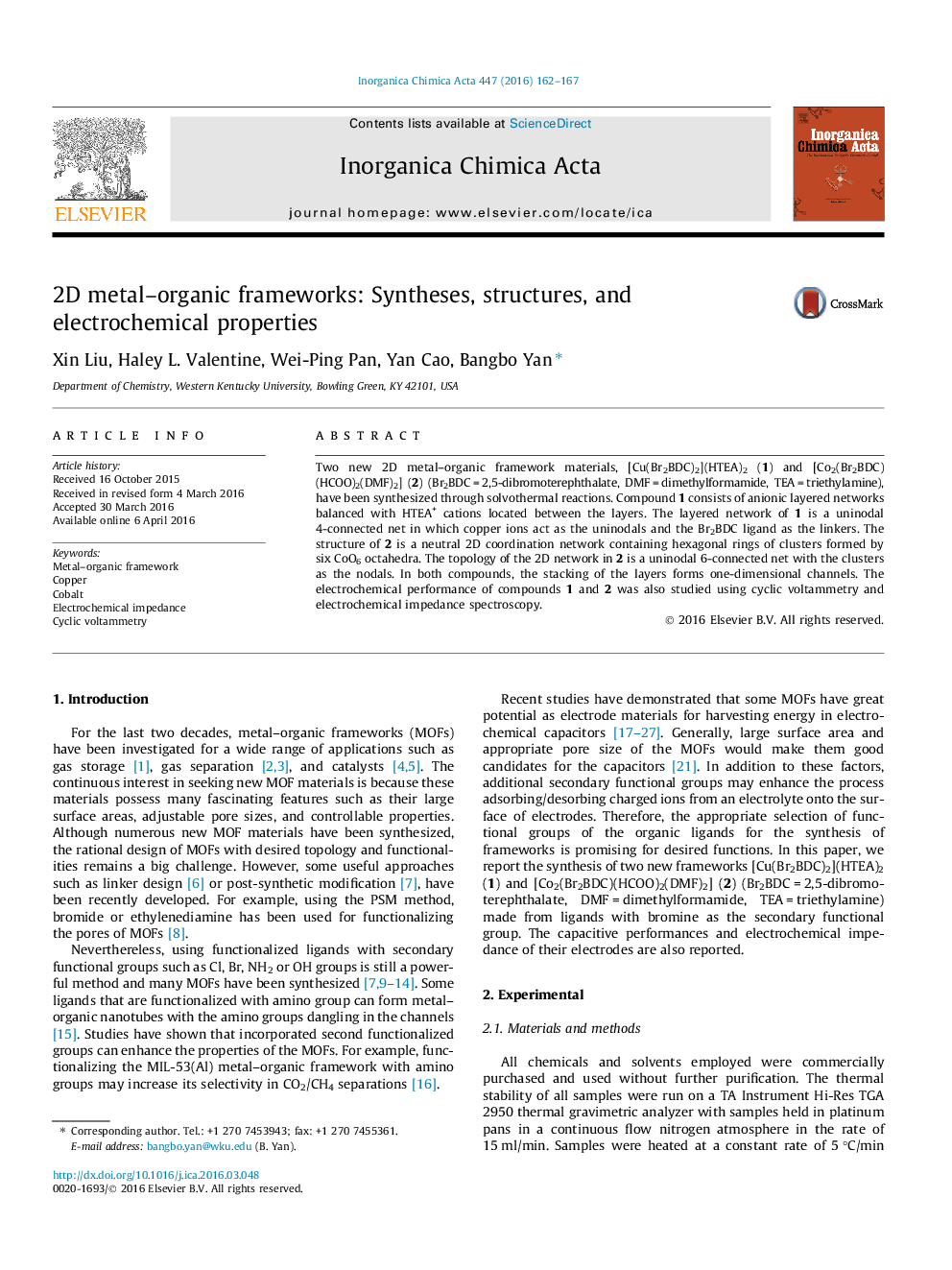| Article ID | Journal | Published Year | Pages | File Type |
|---|---|---|---|---|
| 1307492 | Inorganica Chimica Acta | 2016 | 6 Pages |
•Anionic or neutral layered coordination networks with secondary functional group.•One-dimensional channels along the stacking directions of the layered networks.•Novel secondary building unit of cobalt-carboxylate clusters.•Characteristic low frequency impedance plots as electrode materials.
Two new 2D metal–organic framework materials, [Cu(Br2BDC)2](HTEA)2 (1) and [Co2(Br2BDC)(HCOO)2(DMF)2] (2) (Br2BDC = 2,5-dibromoterephthalate, DMF = dimethylformamide, TEA = triethylamine), have been synthesized through solvothermal reactions. Compound 1 consists of anionic layered networks balanced with HTEA+ cations located between the layers. The layered network of 1 is a uninodal 4-connected net in which copper ions act as the uninodals and the Br2BDC ligand as the linkers. The structure of 2 is a neutral 2D coordination network containing hexagonal rings of clusters formed by six CoO6 octahedra. The topology of the 2D network in 2 is a uninodal 6-connected net with the clusters as the nodals. In both compounds, the stacking of the layers forms one-dimensional channels. The electrochemical performance of compounds 1 and 2 was also studied using cyclic voltammetry and electrochemical impedance spectroscopy.
Graphical abstractNeutral to anionic 2D networks constructed from 2,5-dibromoterepthalicate and transitional metal ions can stack to form one-dimensional channels. Impedance plots of electrodes of these solids confirm the formation of one-dimensional channels.Figure optionsDownload full-size imageDownload as PowerPoint slide
